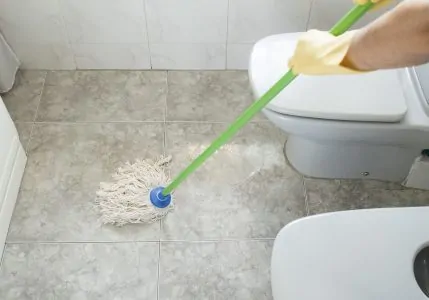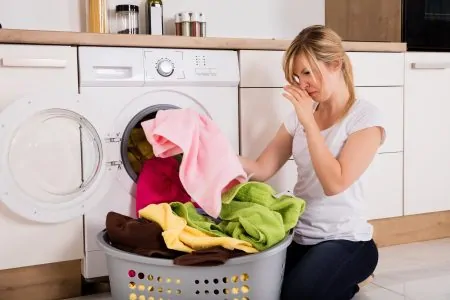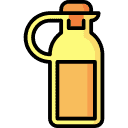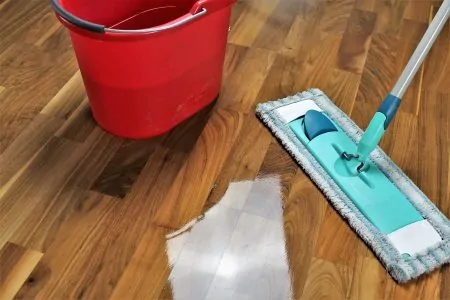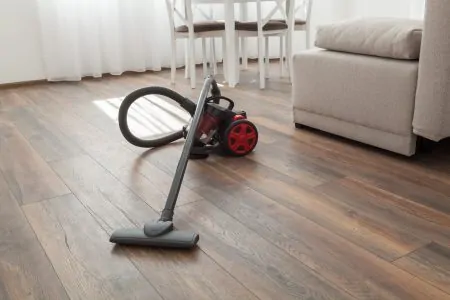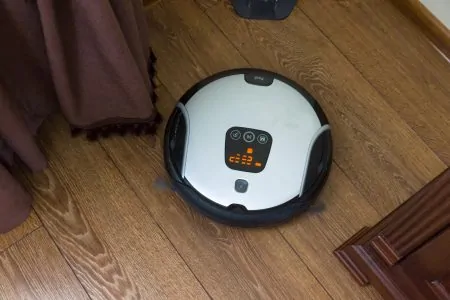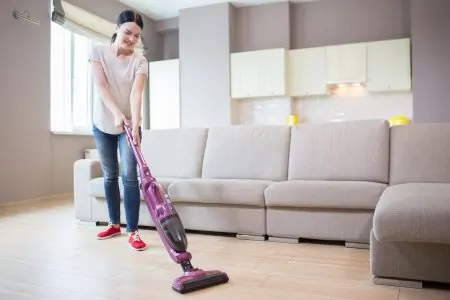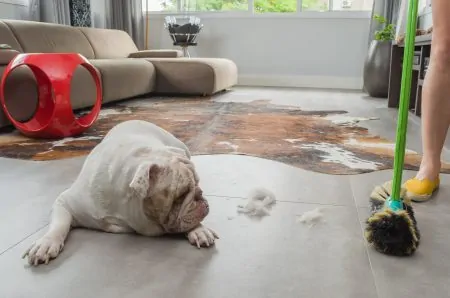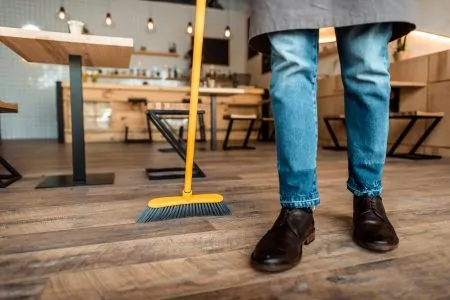Did you know that bathroom floors host a variety of microorganisms — from stomach viruses to the fungi responsible for athlete’s foot (1)? Other fungi in the bathroom generally may not cause disease but can trigger asthma and allergies.
Knowing how to clean bathroom floors well is necessary for the health and wellbeing of your family. However, this task is not fun for many people.
Cleaning this area is often dreaded since it tends to require chemicals that leave you wheezing your way out of the bathroom.
What if we told you that you don’t need to wear a mask? By incorporating your bathroom floor into your daily routine, this job becomes much more manageable.
Key Takeaways
- Clean bathroom floors regularly to remove germs and prevent mold or mildew growth.
- Use a broom or vacuum to remove dust and loose dirt before mopping with a cleaning solution.
- Use natural cleaners like vinegar or lemon juice to remove stubborn stains without harsh chemicals.
- Pay attention to grout lines and corners, using bleach, baking soda, or vinegar and salt for effective cleaning.
Ceramic or porcelain tile is the most common type of flooring in bathrooms. These are super easy to clean and maintain. The best part is that you can use natural products such as vinegar. No more wheezing or toxic fumes!
Tile, however, does have some trouble areas within a bathroom, and you must pay attention to these. Deep corners, grout lines and metal objects such as a trash can, can be cause for trouble.
These areas might have mildew or mold, or soap scum. Beauty and hair products can also cause stains if you do your daily routine in front of the bathroom mirror.
Cleaning the Bathroom Floor
So how exactly should you clean your bathroom floor? Let’s get it sparkling clean, germ-free, without hurting your head and lungs.
- Time: 45 minutes
- Difficulty: Easy
What You’ll Need
- Detergent
- Broom or vacuum
- Bucket
- Water
- Cleaning solution (such as tile cleaner, dish soap, or vinegar)
- Mop or push broom
- Small cleaning brush
- Floor squeegee
- Towels
1. Clear the Floor
Before starting, make sure the floor is clear of any loose objects. Remove stools, trash cans, and toys. This will give you a clear area to move around freely.
Wash bathroom mats. Some are machine-washable. If not, give the mat a good scrub using a detergent, then rinse thoroughly and hang to dry.
2. Remove Dust
Removing dust and loose dirt will make it easier to scrub the floor later on. Use a broom or even a vacuum. Make sure the floor is completely dry before vacuuming to avoid damaging your machine.
You can also give the floor a thorough rinse using a small hose or showerhead. Direct the water into the corners to get all of the dust and dirt away. If there’s more debris on the floor, collect it and throw it in the trash to avoid a clogged drain.
This is best suited if you have a wet room with a drain. Otherwise, you’ll just flood your bathroom.
3. Cleaning the Floor
Fill a bucket with warm water and mix in a cleaner that’s safe for your flooring. Lysol and Dawn are highly effective at beating grime and grease from various bathroom surfaces. You can also pour a cup of white vinegar into the bucket if you wish.
Use a mop to clean the entire floor or a push broom if the floor is extra grimy. A small brush can also be used if you only have a small area to cover.
4. Rinse
Rinse the floor with clean water and use a floor squeegee to direct the water down the drain. However, if this isn’t an option, use only a slightly wet mop to keep water at a minimum. Consider a spin mop since these are effective at wringing out excess water.
5. Dry
When you’re done, you must dry the floor to avoid mold or mildew growth. Use a clean towel or cloth to wipe the floor. Pay close attention to corners and grout lines as these places are more prone to mold.
Removing Bathroom Floor Stains
While the above cleaning method is fantastic for upkeep, you might notice stubborn stains from time to time. We’ll show you a few different cleaning methods for eliminating these stains.
Natural Acidic Cleaners
Avoiding harsh chemicals might be essential in homes with children or pets. Fumes can often stick around or spread throughout the house, affecting everyone.
Luckily, natural cleaners such as vinegar and lemon juice are always close at hand and effective. Vinegar is excellent at removing grease stains, deodorizing and disinfecting bathroom floors.
Mix equal parts water and vinegar in a spray bottle and give it a good shake. Then apply the solution to a stain and scrub with a sponge.
You can also use pure lemon juice in a spray bottle to treat spots and grout. Another great use for lemons is to remove rust stains.
Cut a lemon in half and coat each half in salt. Sprinkle additional salt on the rust stain and begin to scrub with the lemon half — squeeze as you go to release the juice. Finally, rinse and wipe the area when done. You may also replace salt with baking soda if you wish.
Warning
Bleach
If you notice mold or mildew, you can combine water and bleach at a 3:1 ratio. Apply it directly to the stain, give it a minute or two to work and then scrub using a sponge or brush. Rinse with clean water and wipe to dry (3).
Keep In Mind
You can also use ammonia to remove mold and mildew stains. Mix a quarter cup of ammonia in a gallon of water. Apply to the troubled area, scrub using a brush or sponge, rinse well, and wipe to dry (5).
Avoid Disaster
Steam Cleaner
When you need to do an extra deep clean in your bathroom, try a steam cleaner. They use high-temperature steam to blast grime, bacteria, and mold away.
Fill up the water tank and allow the device to heat up. Turn the machine on and push or pulse the trigger as you move across the floor.
Quick Tips for Grout Cleaning
Clean grout is essential if you want your bathroom floor to shine. Grime and bacteria will often accumulate in this area, which can be difficult to remove if left. Here are a few tips for cleaning grout lines:
1. Bleach
If you have white or light-colored grout in your bathroom, you can use bleach to remove stains. Dip a sponge or stiff brush in bleach, then scrub the lines and rinse with a damp cloth. Remember to keep windows and doors open for proper ventilation.
2. Baking Soda
Creating a baking soda paste is an effective way to quickly beat grout grime. Combine equal parts baking soda and water, then apply to the grout and leave to sit for up to an hour. Use a stiff brush to scrub the paste into the lines and wipe using a cloth or clean sponge.
3. Vinegar and Salt
Mix one cup of vinegar and one cup of hot water in a bucket. Add one cup of salt and about two tablespoons of dish soap. Combine the solution well before soaking a sponge in it.
Then apply a generous amount of the solution to the grout lines using the sponge. Allow it to sit for 10 minutes, then wipe using a clean sponge dampened with water.
Final Tips for Cleaning Bathroom Floors
Maintaining a good cleaning regime for your entire bathroom is key to keeping it clean. Due to the often moist environment, bathrooms are prone to mold growth. This can cause health concerns for you and your family because the spores can quickly spread to other areas.
Here are some bonus tips on how to clean the bathroom floor:
- Clean the floor last: Leave the floors to the end if you’re cleaning the whole bathroom. There might be spills or dirt falling onto the floor while cleaning tiles or wiping off shelves.
- Get into the corners: Use small brushes or even a cotton ball to clean corners effectively.
- Keep the floor dry: Finishing off by wiping the floors dry will help to keep mold and mildew at bay. It will also help to prevent slippery tiles that could be dangerous.
FAQs
Beat the Grime
Cleaning your bathroom floor might have been the most dreaded task of the week — but it shouldn’t be. Knowing how to clean your bathroom floor effectively can help make the job much easier.
You can use a multi-surface cleaner to scrub the floor and remove stains such as soap scum. Make sure you give the grout lines a thorough clean once in a while using an effective method.
Now that you know these top methods, your bathroom will look (and feel) immaculate.
